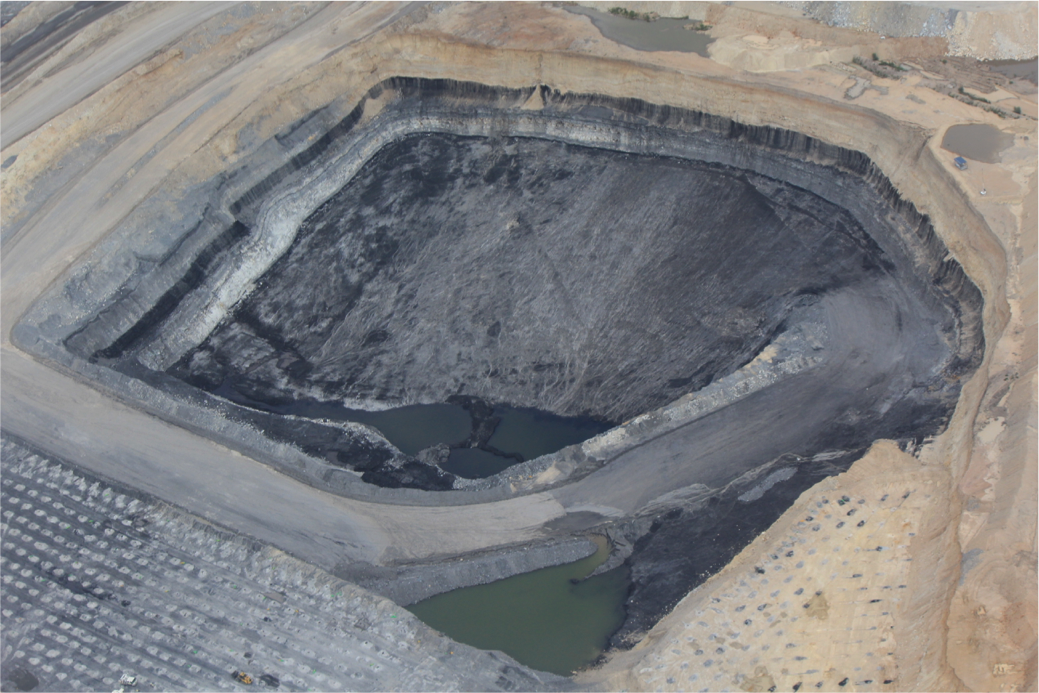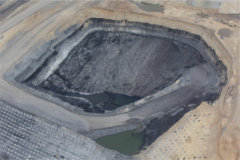Before we end up deep in an economic and environmental crisis, it is important for Australians to know the facts of lending our land to mining executives.
Most Aussies know how a fair loan works because we are all treated to the same questioning and interrogation by the banks. If you don’t seem like you can pay it back, then the lender won’t take the risk.
We would assume that the same strict measures would take place between our elected government and mining executives when they wish to buy or lease our land. Surely, with their huge executive paychecks, they could afford to obey the conditions the government sets for our environmental loans? Yet with very few mines being rehabilitated and an environmental debt reaching billions of dollars, it is becoming apparent that we aren’t getting a fair return for leasing our environment.
We are just giving it away to be destroyed, and then being footed the bill.
As Australians, we manage the land that runs from the east coast to the west coast. It is our greatest resource; it is where we build our homes, where we grow our food, and raise our children. For Australia’s indigenous people it is their connection to their culture and their self. To manage this incredible country, we allow government representatives to decide how best to use this resource.
The current management plan is to lease, loan or sell parts of our land to individuals and companies in the hopes that doing so will increase the quality of Australian lives.
One of the major sectors entrusted with these loans is the mining industry, which has ownership preference on up to 53% of Australia in the form of mining and exploration licenses. Once a mining company decides to follow through with the license, our representatives meet with mining executives, and together they draft leases and then Major Project approval conditions. The Major Project approval conditions are requirements that a mining company must meet if they intend to turn the land (and whatever used to be there) into a mine.
They’ll usually agree to terms that say they must ensure the protection of the community, protect indigenous artefacts and culturally significant sites, rehabilitate any damaged land, protect endangered species, create environmental havens and regularly report on those processes for monitoring.
Those are the conditions we set when we agree to loan out our environment.
When all of them are met, the Australian public and the coal mining companies can both share the rewards of this loan. We receive a good return (usually in the form of royalties) and can continue lending.
Under the assumption of these returns, we have opened up the majority of Australian land, the spiritual and cultural homes of the Indigenous people of Australia, to both foreign and local mining companies. However, through community action and governmental investigations, it has become clear that mining executives are not holding up their end of the bargain.
Instead of rehabilitating their dig sites, mining executives have found loop-holes to avoid the true cost of rehabilitation. One strategy is to sell the mine to junior companies before formal closure, where the eventual rehabilitation cost would be known — this strategy was employed by Rio Tinto who sold their Blair Athol mine for $1 to a junior mining company. The sale coincided with experts estimating that the upcoming costs of rehabilitation would undoubtedly reach hundreds of millions of dollars. Rio Tinto only had to pay $80 million.
They can also place them in a state of ‘care and maintenance’; a corporate trick that leaves a mine in limbo, as the final payment of rehabilitation isn’t due until the mine formally closes. These tricks destroy the surrounding land, leaving mining executives laughing in the face of their legal promises to the Australian public.
Long after the Australian people stop benefiting from the rewards a mine can bring, we’ll still be suffering the consequences of its slow corrosion of our land.
Examples are littering our countryside; the NSW government has ignored the advice of experts at NSW’s Department of Planning, which stated that Whitehaven Coal should rehabilitate their final void to avoid the movement of heavy metals and acid soils. Instead, the public will be left with permanently scarred, toxic land, while Whitehaven Coal executive pockets are lined with huge paychecks. With no way to farm the land, and clean water sources drained or poisoned, the government will have no choice but to pay for rehabilitation with tax-payers’ money.
Leasing land to mining executives isn’t just costing us endangered ecosystems; it’s also ruining the lives of farmers and locals. There are just too many examples of the average Australian’s livelihood being threatened or destroyed. Like the farmers from Maules Creek who are losing their personal income due to Whitehaven Coal’s mismanagement of rehabilitation, whereby uncontrolled animal populations are escaping the mine site and decimating crops.
The land that we’re losing is the land that supplies the food and water we need to survive. And history has shown us that this isn’t a temporary loss. When a company fails to rehabilitate a mining site, they are poisoning our access to land, food and water for generations to come.
And, yes, when our government approves a mine, a bond is secured to cover the cost of rehabilitation just in case the mining executives fail to do so. But this bond often amounts to less than half of the actual cost of returning the land to its pre-mine state. A surprisingly common example is represented through Anglo American’s Callide mine security bond of $114 million (averaging around 20 cents per tonne of coal sold) being 10 times less than independent estimates for rehabilitation ($2 per tonne of coal). The government is then forced to fork out millions to make up the difference.
Even if we can turn a blind eye to 50,000 abandoned mines littering our country, we soon won’t be able to ignore the impact that the expansion of active mines is having on our economy. Thanks to reckless and unethical behaviour from the mining industries executives, Australia now finds itself on the brink of a financial crisis. And just like the recent Global Financial Crisis, this new Ecological Financial Crisis has come from the unregulated, greedy practices mentioned so far.
The Queensland Auditor General’s investigation into these practices resulted in a damning report. Queensland’s environmental debt of $3.2 billion in rehabilitation is one that future generations of Queenslanders will have no choice but to pay. Forget funding public health and schools, if we want access to clean water and farmland, then this will have to be paid first. Unsurprisingly, the NSW Auditor General is now following with a similar investigation.
If a mining company walked into a bank and was treated like the average Australian, their repayment profile would be so terrible that they would never be able to secure the huge loans that our government representatives give out to them. So, it has become shockingly apparent that we need to re-evaluate how we lend our land to these companies.
Rather than just wait for an Ecological Financial Crisis, Australians must urge their government to give out smarter environmental loans. If we must mine our land, then we have to hold mining executives accountable to their conditions of approval. By requiring bonds that reflect the true cost of rehabilitation, we can take a single, simple step toward protecting our land. We cannot afford to wait, Australia. We need to regulate.
Paris Ericksen is a writer and science graduate from UNSW — interested in Ecology, Conservation and Philosophy. Paris is currently working with the Leard Forest Research Node and Wando Conservation who are bringing people of all backgrounds up to the Leard Forest for citizen science projects.

